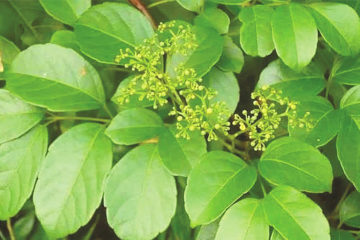Have you ever wondered how scientists decide the age of our planet? It’s an interesting area of research referred to as geochronology, and it depends on the utilization of various materials to unlock the secrets of Earth’s historical past. In this text, we’ll explore the several types of materials that scientists use for relationship the Earth, and why they are essential in unraveling the mysteries of our planet’s previous.
The Importance of Dating the Earth
Before we delve into the precise materials used for courting the Earth, let’s first perceive why this is such a vital space of scientific analysis. By figuring out the age of rocks and different geological options, scientists can piece collectively the chronology of Earth’s history. This permits us to grasp how our planet has advanced over billions of years, and provides perception into the processes which have shaped our world.
Understanding Earth’s history is not just essential for scientists; it could possibly even have sensible applications in numerous fields. For example, data of geological history might help in finding useful minerals, predicting natural disasters, and even understanding the potential for future climate change. So, let’s now discover the totally different materials scientists use to unlock Earth’s secrets.
Radiometric Dating: A Powerful Tool
Radiometric courting is the first method scientists use to find out the age of rocks and minerals. It relies on the principle that certain parts in nature are radioactive and decay at a predictable price over time. By measuring the ratio of father or mother isotopes to daughter isotopes in a pattern, scientists can calculate how lengthy it has been because the rock or mineral formed.
So, what materials are best fitted to radiometric dating? Let’s have a look:
Igneous Rocks: Clocks in Crystallization
Igneous rocks, which type from the solidification of molten magma or lava, are wonderful candidates for radiometric relationship because they contain minerals that incorporate radioactive elements. When these minerals crystallize, they trap tiny amounts of radioactive isotopes of their crystal structure, successfully preserving a record of the time of crystallization.
Some widespread radioactive isotopes used for dating igneous rocks include uranium-235, uranium-238, and potassium-40. By measuring the ratio of mother or father isotopes to daughter isotopes in a sample, scientists can calculate the age of the rock. These dating strategies can provide correct ages starting from thousands to billions of years, depending on the half-lives of the isotopes involved.
Sedimentary Rocks: Clues from the Past
Sedimentary rocks, on the opposite hand, are generally not directly datable using radiometric strategies. This is because they are shaped from the accumulation of sediment particles, such as sand, mud, and natural materials, which have been weathered and transported from older rocks. However, scientists can still determine the age of sedimentary rocks by dating the minerals inside them or military dating apps the igneous intrusions or volcanic ash layers they comprise.
By analyzing the minerals or volcanic ash layers within sedimentary rocks, scientists can use radiometric courting strategies to determine the ages of the occasions that produced the sediment or the lava flows that shaped the ash layers. This offers priceless details about the timing of geological processes, such because the deposition of sediments or the eruption of a volcano.
Fossils: Windows into the Past
Fossils are not immediately helpful for radiometric relationship, as they do not comprise radioactive isotopes. However, they play a crucial position in serving to scientists establish relative ages of rocks and events. Fossils are the stays or traces of historical vegetation and animals that have been preserved in rocks. By identifying and comparing the fossils found in numerous layers of rocks, scientists can determine the relative ages of these rocks.
For instance, if a sure species of fossil is present in one layer of rock however not in another, the layer with the fossil must be older. This precept, often known as the regulation of faunal succession, permits scientists to create fossil-based timelines of life on Earth. Combining these relative ages with radiometric ages of igneous rocks or volcanic ash layers can provide a more comprehensive understanding of Earth’s history.
Accuracy and Limitations
While radiometric courting is a strong device for determining the age of rocks and minerals, it is necessary to acknowledge its limitations and potential sources of error. The accuracy of radiometric dating relies on several elements, corresponding to the choice of appropriate isotopic methods, the preservation of minerals, and the belief of a closed system for the rationale that crystal shaped.
Additionally, some radioactive isotopes have very long half-lives, making them less suitable for courting latest events. Others could also be subject to environmental contamination, which can affect the accuracy of the age willpower. However, these potential sources of error can usually be addressed by way of careful pattern choice, analytical techniques, and comparison with different dating strategies.
Conclusion
The study of Earth’s historical past via geochronology is an thrilling and continually evolving area of science. By utilizing totally different materials and courting strategies, scientists can uncover the mysteries of our planet’s previous and acquire useful insights into its future.
From the crystallization of igneous rocks to the analysis of fossils, each material provides a singular window into Earth’s historical past. Radiometric dating, in particular, has revolutionized our understanding of geological time and contributed to quite a few scientific discoveries.
So the following time you are taking a walk on a rocky beach or hike through a mountain vary, take a second to appreciate the immense age and complexity of the rocks beneath your toes. They maintain the key to unlocking the story of our planet, an historical story informed via the language of minerals, isotopes, and time.
FAQ
-
What is one of the best materials for use for courting the age of the Earth?
The best material to date the age of the Earth is zircon, a mineral generally present in igneous rocks. Zircon accommodates trace quantities of uranium, which undergoes radioactive decay over time. By measuring the ratio of uranium to its decay product, scientists can determine the age of the zircon and the rock it’s found in, providing an estimate of the Earth’s age. -
Why is zircon considered the preferred materials for dating the age of the Earth?
Zircon’s reputation stems from its sturdiness and resistance to chemical weathering. It has a high crystalline structure which permits for accurate measurement of the uranium-lead ratios. Zircon can also be frequent in many forms of rocks, making it broadly obtainable for examine. -
Are there other materials in addition to zircon that can be utilized for relationship the Earth’s age?
Yes, there are different materials that can be used for courting the age of the Earth. For instance, minerals similar to baddeleyite and monazite can be employed, notably in older rocks. Additionally, isotopic methods utilizing minerals like apatite and titanite can present complementary information for courting Earth materials. -
Can carbon-14 courting be used to determine the age of the Earth?
No, carbon-14 dating cannot be used to find out the age of the Earth. Carbon-14 courting is just effective for determining the age of natural supplies, corresponding to stays of vegetation and animals, up to around 50,000 years outdated. For courting the Earth, older radioactive isotopes with longer half-lives, corresponding to uranium-lead or potassium-argon relationship, are used. -
How correct is the dating of the Earth using zircon or other materials?
The relationship of the Earth using zircon or different supplies may be remarkably accurate. With modern strategies, the margin of error for dating rocks could be as low as 1-2%. However, it’s important to notice that sure factors, corresponding to contamination or alteration of the minerals, could affect the accuracy of the courting process. -
Are there any limitations to utilizing zircon or other supplies for courting the Earth’s age?
While zircon and different relationship supplies are generally dependable, there are some limitations to contemplate. Zircon ages could be affected by processes corresponding to lead mobility, metamorphism, or variations in initial uranium composition. Additionally, dating strategies are reliant on assumptions in regards to the initial situations of the sample and the rate of decay, which may introduce some uncertainty. -
What are the implications of precisely relationship the age of the Earth?
Accurately courting the age of the Earth has profound implications for understanding the planet’s geological and evolutionary historical past. It allows scientists to ascertain a timeline of occasions, such as the formation of the Earth, the emergence of life, and the development of complex organisms. By gaining insights into Earth’s previous, we can better comprehend its present state and possibly even predict its future.






Ý kiến của bạn